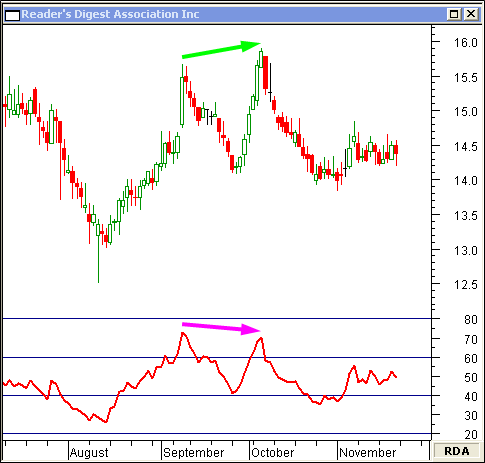
The listmanageduser utility returns the username and password of the account that owns the hosted feature layer data in relational and spatiotemporal big data stores. This utility also returns the username and password of the scene cache owner for tile cache data stores, and the owner of the graphs in the graph store. The deletebackup utility allows you to delete backup files you created for relational data stores or graph stores. First, run the listbackups utility to see the names and creation times of the backups created using the backupdatastore utility.

In those cases, you may want to move the data to another drive on the same server or to a shared location on a different server. If you do not want the data store to use the default error log file location of \arcgisdatastore\logs, you can run the changeloglocation utility to create error log files in a different directory. This enables you to select events for back-out-only rerating based on any event criteria. When all the accounts in a rerate job have been successfully rerated and updated, pin_rerate updates the rerate job status from ACCOUNT_LOCKED to RERATED and then notifies the batch pipeline that rerating is complete.
What Are the 4 Types of Economic Utility?
In the first example, the backup location for a relational data store is set to a directory named fsdata_bu on a machine named myshare. Before you can begin creating backups, you must run the configurebackuplocation utility with the register option to specify a file share. The changepassword utility can be run on the time utility is created by primary relational data store machine only. You must run the changedatastoremode utility on the primary relational data store machine, not the standby machine. If the event type specified in the -n parameter input file has subclasses, all subclass events are also rerated, providing they meet the selection criteria.
After rerate jobs are created, you run pin_rerate with the -process jobs parameter to notify the batch pipeline that rerating is about to begin. To define custom parameters, you map extraction keys to fields in the event object. You then run the load_pin_rerate_flds utility to load the extraction-key-to-event-field mappings into the /config/rerate_flds object in the BRM database. This enables you to customize which event attributes are used to select accounts and events for rerating.
Utilities that infuse real-time intelligence systems into their business operations can secure their unique position in today’s market. By default, ArcGIS Data Store creates a full backup of the relational data store every four days. You can change how often a full backup is created by running the updatebackupschedule utility.
Processing Rerate Jobs When Selecting Accounts for Rerating
For example, to unregister a relational and tile cache data store, type –stores relational,tileCache. In this example, the most recent backup is in a backup location named rdsbackups and will be restored to the existing data store. Because the default store type is relational, and it remains bound by default to the GIS Server site with which it was registered, you do not have to specify –store relational or –bound true.
Is the biggest US public utility finally catching up on clean energy? – Canary Media
Is the biggest US public utility finally catching up on clean energy?.
Posted: Wed, 26 Jul 2023 07:00:00 GMT [source]
By default, pin_rerate rerates all the events for the selected accounts from the start time that you specify. You can specify to rerate only specific events for the selected accounts by using the -r parameter. Data analytics-driven business intelligence solutions that provide analyses via rich visuals and statistics are what utilities need to adopt. The capabilities provided by BI systems can help enhance the reliability, capacity and availability of the assets, which in turn improves asset performance.
Top five benefits of real-time business intelligence for utilities
More specifically, utility is the total satisfaction or benefit derived from consuming a good or service. Economic theories based on rational choice usually assume that consumers will strive to maximize their utility. The algorithmic technique creates a schedule based on one or more application-specific objectives (i.e., optimality criteria). In this example, the data store database will no longer accept connections from the workcom machine when logged in as user hqo.n_1E7.
- Additionally, utils can decrease as the number of products or services consumed increases.
- In this example, listadminusers is run on a machine where only a spatiotemporal big data store is installed.
- A TUF is more general—it has a critical time, with application-specific shapes and utility values on each side, after which it does not increase.
- An economic good yields utility to the extent to which it’s useful for satisfying a consumer’s want or need.
- You would unregister a data store from your GIS Server site if you decide you no longer want to use the data store or the services that depend on it.
- To configure more than one data store type on the same machine, separate the types with a comma.
Later economists, particularly those of the Austrian School, developed this idea into an ordinal theory of utility, or the idea that individuals could order or rank the usefulness of various discrete units of economic goods. An action’s operation duration may be fixed and known at system configuration time. More generally, it may be either fixed or stochastic but not known (either with certainty or in expectation) until it either arrives or is released. Thus, TUFs provide a rich generalization of traditional action completion time constraints in real-time computing. Subsequently, numerous variations on the original TUF model, the TUF/UA paradigm’s system model, and thus scheduling techniques and algorithms, have been studied in the academic literature—e.g.,[6][7][8][9][10]—and applied in civilian contexts.
Report Generated When Rerating Is Performed before Billing
Data stores configured on the same machine compete for memory and other resources, negatively affecting performance and possibly causing the data stores to stop working. This is especially true for spatiotemporal big data stores, graph stores, and object stores; do not configure a spatiotemporal big data store, graph store, or object store on the same machine as another data store or other ArcGIS component. You can register a second backup location to store the backups you create using the backupdatastore utility. You can use a shared file directory, an S3 bucket, or an Azure Blob storage container for secondary backup locations for all but the graph store. The configurebackuplocation utility allows you to specify the location where ArcGIS Data Store writes backup files for both scheduled backups and backups created with the backupdatastore utility.
Because in the future if i want to modify the time i will not have to go through all the code and change the time. Utilities deal with an enormous amount and increasingly diverse set of data coming in from various sources. However, somewhere in this data deluge lays the path to a more efficient tomorrow. Data analytics gives them the power of insights to uncover significant events and identify trends in order to adapt quickly to ever-changing business dynamics. Utility in economics was first coined by the noted 18th-century Swiss mathematician Daniel Bernoulli.
- In the following example, the tile cache data store is restored to a new machine.
- Real-time business intelligence systems bring forth an interaction process for utility operators to proactively view and analyze operational data.
- Because spatiotemporal big data stores can be very large, subsequent use of the backupdatastore utility creates a backup file containing only the changes since the initial full backup.
- If utility in economics is cardinal and measurable, the total utility (TU) is defined as the sum of the satisfaction that a person can receive from the consumption of all units of a specific product or service.
- For example, form utility is the result of the design of a product or service, and time utility refers to the ability of a company to provide services when the customers need them.
- The configurebackuplocation utility allows you to specify the location where ArcGIS Data Store writes backup files for both scheduled backups and backups created with the backupdatastore utility.
When restoring after a crash or to move the relational data store, specify –target most-recent. If restoring a relational data store to a point in time, specify the date and time (in UTC) to which you want to restore the data store. If you have a specific backup file you want to restore, specify the backup file name instead. If you need to replace one of the machines in a multimachine tile cache data store, you’ll most likely need to rebalance the scene layer caches across the tile cache data store.
For example, form utility is the result of the design of a product or service, and time utility refers to the ability of a company to provide services when the customers need them. If you need to clean up files on more than one machine in the same data store, you must run the tool on each machine. In this example, ArcGIS Data Store is installed on a different machine, and the administrator runs the configureserviceaccount utility to set the same account using the file created in the previous example. By default, the relational data store communicates with the hosting server over HTTPS. In this example, the enablessl parameter is used to configure the relational data store to communicate with the hosting server over HTTP. Pin_rerate finds all the rerate jobs with a status of ACCOUNT_LOCKED and calls rerating opcodes to rerate the accounts.

In ordinal utility terms, a person might eat the first slice of pizza, share the second slice with their roommate, save the third slice for breakfast, and use the fourth slice as a doorstop. Marginal utility (MU) is defined as the additional (cardinal) utility gained from the consumption of one additional unit of a good or service or the additional (ordinal) use that a person has for an additional unit. Austrian economist Carl Menger, in a discovery known as the marginal revolution, used this type of framework to help him resolve the diamond-water paradox that had vexed many previous economists. Early economists of the Spanish Scholastic tradition of the 1300s and 1400s described the economic value of goods as deriving directly from this property of usefulness and based their theories on prices and monetary exchanges.
The economic utility of a good or service is important to understand because it directly influences the demand, and therefore price, of that good or service. In practice, a consumer’s utility is usually impossible to measure or quantify. However, some economists believe that they can indirectly estimate what is the utility of an economic good or service by employing various models. In this example, the upgradedatasource utility will update the indexes used by the GeoEvent Server map service recon. In this example, listadminusers is run on a machine where only an object store is installed. In this example, listadminusers is run on a machine where only a graph store is installed.
Configuring Custom pin_rerate Parameters
This command also allows you to alter properties of a backup location and remove a backup location. When your spatiotemporal big data store gets close to running out of disk space, ArcGIS Data Store places it in read-only mode to avoid data corruption. You can use the changedatastoremode utility to return a spatiotemporal big data store to read-write mode after you have added sufficient disk space to the spatiotemporal big data store machines. To back out the balance impacts of rating, run pin_rerate with the -backout parameter. Use the -backout parameter with other parameters that select the accounts and their events for rerating. This creates rerate jobs that are set for back-out-only rerating for the selected accounts.
Getting actionable insights, prescriptions and foresight is necessary for better decision making towards preventive maintenance, quality of service and outage management. Here, the unregisterdatastore utility is run to unregister the relational and tile cache data stores from the GIS Server site. If you have more than one type of data store installed on the same machine and want to unregister more than one at a time, specify each data store type separated by a comma (no spaces).
